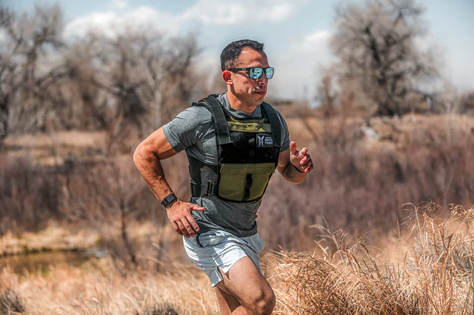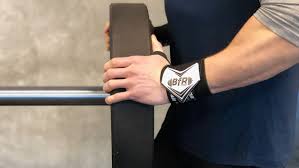Introduction:
As martial arts enthusiasts, beginner martial artists, or seasoned instructors, the journey to mastering MMA involves more than just technique. It requires dedication, discipline, and a strategic approach to training. In this comprehensive guide, we delve into the world of bodyweight workouts tailored specifically for MMA practitioners. From the fundamental benefits to the top exercises and essential gear like weighted vests and wrist wraps, this guide aims to equip you with the knowledge to elevate your MMA game to new heights.
MMA Bodyweight Training:
In the realm of mixed martial arts, bodyweight training serves as the cornerstone of physical conditioning. Unlike traditional weightlifting, bodyweight exercises focus on utilizing one’s own body mass as resistance, making them ideal for enhancing strength, agility, and endurance – crucial attributes for any MMA fighter.As you start your journey into MMA bodyweight training, it’s essential to draw inspiration from the legends of the sport. Explore our blog on The Top 10 MMA Goats: Exploring the Greatest Fighters of All Time to discover the extraordinary feats of the greatest fighters in MMA history.
Benefits of Bodyweight Workouts for MMA:
Bodyweight workouts offer a myriad of benefits for MMA practitioners. They not only build functional strength and power but also improve flexibility, balance, and coordination – essential components of a well-rounded fighter. Additionally, bodyweight exercises promote muscle endurance, enabling fighters to sustain peak performance throughout prolonged bouts.
Beyond the physical benefits, MMA training encompasses a holistic approach to fitness. Dive deeper into the MMA fitness revolution in our blog, Beyond the Octagon: Exploring the MMA Fitness Revolution, and uncover the innovative training methods shaping the future of the sport.
Top 10 Bodyweight Exercises for MMA:
- Push-Ups:
Push-ups are a fundamental bodyweight exercise that targets the chest, shoulders, triceps, and core muscles. They mimic the pushing motion used in various MMA techniques such as striking and grappling. Variations like diamond push-ups or plyometric push-ups can further enhance explosiveness and upper body strength, crucial for generating power in punches and maintaining a strong defensive posture.
Instructions:
- Start in a high plank position with your hands shoulder-width apart and arms fully extended.
- Lower your body until your chest nearly touches the ground, keeping your elbows close to your sides.
- Push through your palms to extend your arms and return to the starting position.
- Keep your core engaged and maintain a straight line from head to heels throughout the movement.
- Pull-Ups:
Pull-ups are excellent for developing upper body strength, particularly in the back, biceps, and forearms. MMA fighters rely on pulling strength for clinching, grappling, and executing takedowns. Incorporating pull-ups into your routine improves grip strength and overall body control, essential for dominating opponents in close-quarters combat situations.
Instructions:
- Grip a pull-up bar with your hands slightly wider than shoulder-width apart, palms facing away from you.
- Hang with your arms fully extended, engaging your core and keeping your shoulders down and back.
- Pull your body upward by bending your elbows and bringing your chin above the bar.
- Lower yourself back down with control to the starting position.
- Squats:
Squats are a cornerstone lower body exercise that targets the quadriceps, hamstrings, glutes, and core muscles. Strong legs are vital for generating power in kicks, maintaining balance, and executing explosive movements such as sprawls and takedowns. Variations like jump squats or pistol squats enhance agility and dynamic strength, essential for swift footwork and evasive maneuvers in the octagon.
Instructions:
- Stand with your feet shoulder-width apart, toes pointed slightly outward.
- Lower your body by bending your knees and hips, keeping your chest up and back straight.
- Descend until your thighs are parallel to the ground, or as low as your flexibility allows.
- Press through your heels to return to the starting position, squeezing your glutes at the top.
- Burpees:
Burpees are a full-body exercise that combines elements of strength, cardio, and agility training. They engage multiple muscle groups simultaneously, including the chest, shoulders, arms, core, and legs. Burpees improve cardiovascular endurance and muscular endurance, simulating the demands of MMA bouts where fighters must sustain high-intensity activity for extended periods.
Instructions:
- Begin in a standing position with your feet hip-width apart.
- Lower into a squat position, placing your hands on the ground in front of you.
- Jump or step your feet back into a plank position, keeping your core tight and spine neutral.
- Perform a push-up by lowering your chest to the ground and then pressing back up.
- Jump or step your feet forward to return to the squat position.
- Planks:
Planks are a static core exercise that strengthens the abdominal muscles, lower back, and stabilizing muscles of the torso. Core stability is crucial for generating power in punches and kicks, maintaining posture during grappling exchanges, and preventing injury during high-impact movements. Variations like side planks or plank jacks challenge the core from different angles, improving overall stability and resilience.
Instructions:
- Start in a plank position with your elbows directly beneath your shoulders and forearms resting on the ground.
- Engage your core muscles and keep your body in a straight line from head to heels.
- Hold this position, focusing on maintaining tension throughout your core and avoiding sagging or arching.
- Mountain Climbers:
Mountain climbers are a dynamic exercise that targets the core, shoulders, chest, and hip flexors. They enhance cardiovascular endurance and agility while mimicking the movement patterns involved in ground fighting and transitions. Incorporating mountain climbers into your routine improves conditioning and agility, allowing for seamless transitions between striking and grappling techniques.
Instructions:
- Begin in a high plank position with your hands directly beneath your shoulders.
- Drive one knee towards your chest, then quickly switch legs, alternating in a running motion.
- Keep your hips low and your core engaged to stabilize your body throughout the movement.
- Maintain a steady pace, focusing on controlled movements and keeping your shoulders stable.
- Lunges
- :
Lunges are unilateral lower body exercises that target the quadriceps, hamstrings, glutes, and hip stabilizers. They improve balance, coordination, and flexibility – essential for executing precise kicks, maintaining stance stability, and defending against takedowns. Forward lunges, reverse lunges, and walking lunges can be performed with bodyweight or added resistance for progressive overload.
Instructions:
- Stand tall with your feet hip-width apart.
- Step forward with one foot, lowering your body until both knees are bent at a 90-degree angle.
- Ensure your front knee is directly above your ankle and your back knee is hovering just above the ground.
- Push through the heel of your front foot to return to the starting position.
- Repeat on the other side, alternating legs for each repetition.
- Jump Squats:
Jump squats are plyometric exercises that develop explosive lower body power and improve vertical jump height. They enhance fast-twitch muscle fibers, critical for explosive movements such as shooting for takedowns or delivering powerful strikes. Jump squats also improve overall athleticism and agility, enabling fighters to swiftly close the distance or evade opponents with agility.
Instructions:
- Begin in a squat position with your feet shoulder-width apart.
- Lower into a squat, then explosively jump upwards, extending your legs fully.
- Land softly back into the squat position, immediately transitioning into the next repetition.
- Focus on exploding upwards with maximal effort while maintaining control and stability upon landing.
- Russian Twists:
Russian twists are an effective core exercise that targets the obliques, rectus abdominis, and hip flexors. They improve rotational power and stability, crucial for generating torque in punches, kicks, and grappling movements. Russian twists also enhance proprioception and body awareness, allowing fighters to maintain balance and control while executing dynamic strikes or defending against submissions.
Instructions:
- Sit on the ground with your knees bent and feet flat on the floor.
- Lean back slightly, keeping your spine straight and core engaged.
- Clasp your hands together in front of your chest or hold a weight for added resistance.
- Rotate your torso to one side, bringing your hands or weight towards the ground beside you.
- Return to the center, then twist to the other side, alternating in a controlled motion.
- High Knees:
High knees are a dynamic cardiovascular exercise that engages the core, hip flexors, and leg muscles. They improve agility, coordination, and cardiovascular endurance – essential attributes for MMA fighters. High knees simulate the rapid knee strikes used in clinch fighting and enhance foot speed and agility, enabling fighters to close the distance or create angles effectively during exchanges.
Instructions:
- Stand tall with your feet hip-width apart.
- Lift one knee towards your chest as high as possible while driving your opposite arm upwards.
- Quickly switch legs, alternating between left and right in a running motion.
- Focus on lifting your knees high and maintaining a brisk pace, engaging your core for stability.
- Land softly on the balls of your feet with each repetition, minimizing ground contact time.
By following these detailed instructions for each bodyweight exercise, you can ensure proper form and technique, maximizing the effectiveness of your training regimen for MMA. Incorporate these exercises into your routine to build strength, endurance, and agility – essential qualities for success in the octagon or ring.
How Weighted Vests Enhance MMA Training
Weighted vests serve as valuable tools for intensifying bodyweight workouts and simulating real-world combat conditions. By adding resistance to movements, weighted vests effectively increase the difficulty of exercises, leading to greater strength gains and enhanced cardiovascular endurance – critical for dominating in the cage or ring. Incorporating weighted vests into your training regimen challenges your muscles in new ways, pushing you to adapt and grow stronger with each workout. Elevate your MMA training today with our premium weighted vests available at https://lobomixedmartialarts.com/shop/
The Importance of Wrist Wraps in MMA
Wrist wraps play a vital role in protecting the wrists and stabilizing the joints during intense striking and grappling sessions. By providing support and reducing the risk of injury, wrist wraps enable fighters to train with confidence and push their limits without fear of debilitating setbacks. Whether you’re throwing powerful punches or executing intricate submissions, wrist wraps offer the stability and reinforcement needed to perform at your best. Enhance your training and safeguard your wrists with our high-quality wrist wraps available at https://lobomixedmartialarts.com/shop/.
Conclusion
In conclusion, mastering MMA requires a holistic approach to training that encompasses both physical and mental preparation. By incorporating bodyweight workouts, weighted vests, and wrist wraps into your regimen, you can enhance your strength, endurance, and resilience – giving you the competitive edge you need to excel in the world of mixed martial arts.
